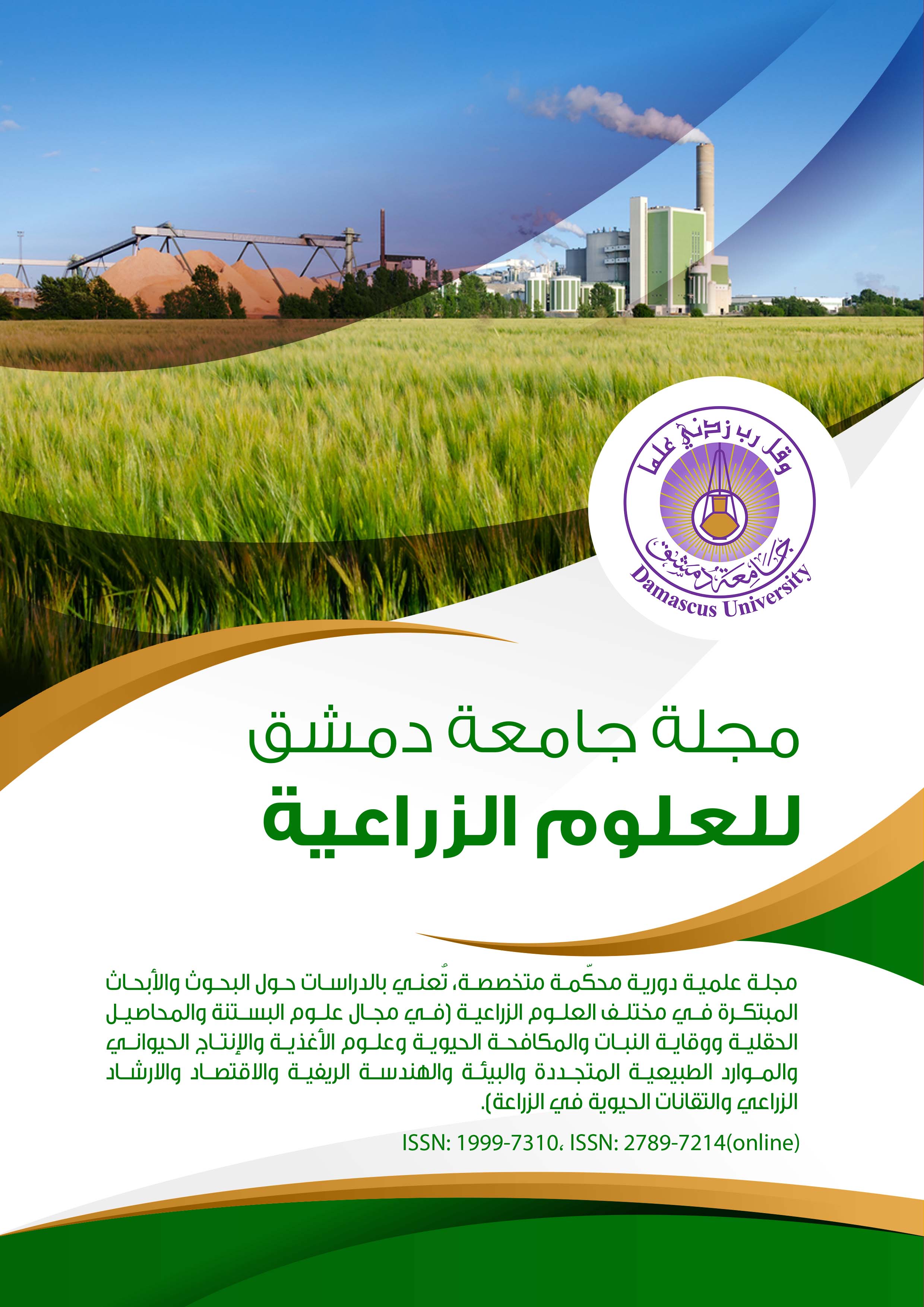Estimation and Monitoring of Sand Proportions Changes in Featured Area in the Syrian Badia Using Mathematical Modeling and Remote Sensed Data
Keywords:
Proportion of sand, Remote sensing, Syrian Badia, Sand dunes, Satellite imageAbstract
Sand proportions were estimated and their spatial distribution was demonstrated in Featured Area in the Syrian Badia, which is located between the province of Deir ez-Zor and Homs and covers an area of approximately 23748.5 km2. This was achieved using mathematical modeling, sensing data, and field measurements. A statistically significant linear equation was derived using the stepwise regression procedure to estimate sand proportions in the study area using a time series of LANDSAT 8, 5 satellite images for the period between 2004 and 2022. These images were later used to derive a number of spectral indices (NDVI, NDSI, and LST) and topographic indices (DEM, Slope, Aspect) as independent variables related to sand proportions in the study area. The research revealed a clear change in the amount of sand blowing or entering different sites within the study area during the study period. There were also changes in the areas of sand increase or decrease between different time periods, as well as differences in their spatial distribution. This may be attributed to variations in the amount and spatial distribution of rainfall, which led to changes in the vegetation cover density that helps stabilize the surface layer of soil, improve its physical properties, so, prevent it from shifting and moving. In addition, differences in the timing of sand and dust storms during the year and variations in their origin locations were observed, which necessarily require the presence of different wind directions and intensities blowing over the study area during different times of the year. This lead to an increase in sand proportions in some areas of the study area and a decrease in others when comparing two different time period, as shown by the research.

